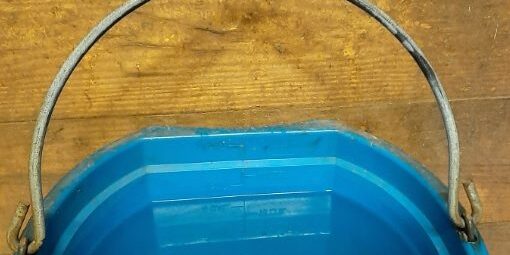If you’ve ever cleaned horse stalls, you know that there is almost nothing worse than finding a water bucket filled with poop; unless you just blindly dumped feed into a corner feeder and realized that the sound was not quite right. You peer inside and discover a pile of poop now covered with feed and expensive supplements. Ugh.
I’ve experienced this on numerous occasions over the years and did what most of us do – scrubbed out the buckets, placed them back in the stall and refilled them. But “poop in the bucket” may be an indicator of a broader issue of discontent and of not feeling safe, in the barn and elsewhere in life. It can be a powerful metaphor. You may need to dig deep to find the source and clean it up.
As a leadership coach, one of my main goals is to help leaders create a “safe place” mentally, emotionally, physically, and spiritually in which to thrive. This helps optimize performance, open new insights, build collaboration, and achieve big goals. It also deepens a sense of purpose, connection and well-being. The process involves deep inquiry, noticing patterns, discovering and eliminating what is not working, challenging beliefs to overcome the status quo, and customizing a new approach that better serves the leader and team. It’s kind of like horse training.
I apply this “safe place” concept to working with my horses and wrote about it in my latest book, “Reinventing Greatness,” as ex-racehorse Lemon Squeezy and I began our journey together. He was a terrible offender of “poop in the bucket” syndrome. Here’s a brief synopsis of how we overcame it. Perhaps consider how this metaphor may apply in your world.
I’ve cared for horses for over 30 years so when Lemon Squeezy arrived, I thought we were well prepared. Careful thought had been given to his stall location (next to my quietest gelding), his transition paddock before getting turned out with the herd, his feed, his blankets (he was clipped and it was winter), and all the other equine requirements. I was wrong. He pooped in his water bucket several times a week and as a special bonus pooped in the corner feeder too. He rolled around in his stall all the time and snapped his teeth at passers-by.
We relocated his water buckets a few feet farther down the wall, removed the corner feeder and fed him in a pan on the floor which I picked up after each feeding. He still pooped in the water buckets. And he began breaking out of cross ties. Over time, I moved the buckets to another wall and changed his turnout pasture. I began grooming him in a different location so he could see his pasture mates outside. I also made some training changes. The teeth snapping stopped. The rolling around in the stall stopped. And… there was NO MORE POOP in the buckets! In fact, he hasn’t pooped in his buckets in over a year.
The upshot of this is that each horse is an individual with unique preferences and needs, just like people. What may feel “safe” to one feels unsafe to another. In order to build a successful partnership, we must be sensitive to these preferences to help a horse relax. The set-up of the barn, turnout, operations, and handling all play key roles in the well-being of your horse, and by extension – YOU!
Not all facilities are set up to accommodate specific needs, but you can do simple things to ensure more peace of mind in your horse. Observe your horse (real or metaphorical) and listen to its feedback as best you can. Stall location, bucket placement, grooming space, and turnout may be in your control. If you own your own farm, it may be easier to experiment and implement changes. Also, be sure to watch for behavior shifts over time as the horse ages.
For example, my 24-year old mare began getting claustrophobic in her stall and started pacing and kicking the walls. She had lived in that barn most of her life; we had designed and built the barn with great care and intention. She was medically ok but clearly no longer content in her stall. So, now she lives outside 24/7 with her friend and a run-in shed. She is completely happy. This summer we added fans to the run-in to keep them more comfortable.
As we all know, horses (and people) cannot learn well when they are stressed. It’s up to us as their leaders to create a safe place to cultivate and deepen a peaceful partnership. Remember to check your own state of being as well since you are a huge part of your horse’s world and he/she will pick up on your stress. Here’s to no more poop in the bucket!

